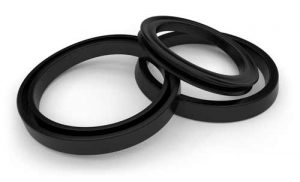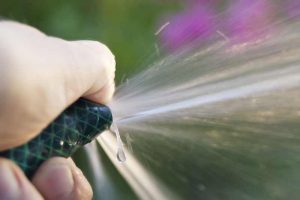How You Can Fix a Leaky Garden Hose in a Few Easy Steps!
You're doing some yard work, and suddenly you discover a leak in your garden hose. Before you throw it in the garbage, wait! Fixing it is easier than you think and far less expensive than buying a new one.

Let's look at how to address each of these scenarios.
A Leaking Connection
If water is seeping or spraying out where your garden hose is connected to the tap or to another hose, chances are you have a cracked or worn gasket. A flat, rubber circle inserted in the hose connector, the gasket helps to create a waterproof seal. With age, they tend to wear and crack, resulting in a leak. For a longer lasting and superior seal, your best bet is to replace it with an O-ring.
A Hole in the Hose

Cut the damaged section of the hose out using garden shears, taking care to have a straight and even cut. Slip a clamp over one of the ends of the hose and insert the connector completely into the hose. Tighten the clamp over the connector with a screwdriver and repeat the steps for the other section.
A Leak at the Hose Bib
The faucet outside your home to which you connect your garden hose is called the hose bib.
There are two common types of leaks that can occur here.
If water continues to drip or run out of the tap when the faucet is tightly closed, the washer inside needs to be replaced. Shut the water supply off. If there isn't a dedicated shut-off valve to the bib, it may be necessary to shut off the main water supply. Open the tap to bleed any water remaining in the pipes. Behind the faucet handle is the packing nut that holds the assembly in place.

On the other hand, if water is seeping out of the bib assembly when the tap is shut off, it may be a matter of tightening the locking nut further. If this proves unsuccessful, remove the assembly following the instructions above and wrap some Teflon tape around the threads before reinstalling it.
By fixing your leaky garden hose yourself, not only are you saving yourself the expense of having to buy a brand new hose, but you’re also helping to reduce your water consumption, therefore saving some money on your utility bills.
Protecting Your Garden Hose
A good quality garden hose is a smart investment. Taking good care of your hose will help to prolong its useful life so that it serves you well through several seasons of garden and lawn maintenance. Here are some of the best practices for taking care of your garden hose.
Whenever you shut off your hose, be sure to drain any remaining water all the way out. Water that’s left sitting in the hose, especially for extended periods will eventually damage it and force you to repair or replace it prematurely. A simple way to do this is to hoist it over your shoulder and let the excess water drain.
- Keep your hose out of the sun. UV rays can weaken the material, and hot water can expand in the hose.<?li>
- Replace washers when they show any signs of dripping or leaking. A general rule of thumb is to replace the washers every spring.
- Once you’re done using your hose, coil it using a hose reel or by hand. You want to avoid the hose from kinking so reroll it immediately it kinks to prevent splitting.
- During winter, remove any attachments after draining the hose, and be sure to keep it out of the elements.
- Repair small leaks using specially designed hose repair tape or common electrical tape. Create a leak-proof seal by overlapping the tape as you wrap the hose.
For more helpful tips and advice or for water leak detection services in Oahu, HI your friends at Allens Plumbing are only a phone call away, dial 808-599-5511.

